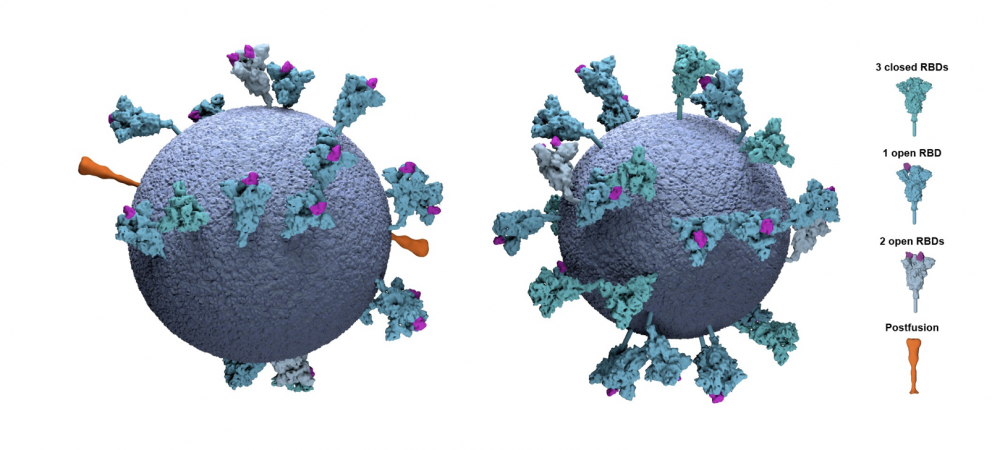

FULL CLAIM: "FDA confirms graphene oxide is in the mRNA 'Covid' fake vaccines after being forced to publish confidential Pfizer documents by order of the US Federal Court"
REVIEW
On 15 July 2023, the davidicke.com website published an article claiming that Pfizer admitted to its COVID-19 vaccine containing graphene oxide, a “highly toxic and conductive substance”. This claim originates from documents released by the group Public Health and Medical Professionals for Transparency. The group comprises several members who have promoted misinformation about COVID-19 vaccines, such as Byram Bridle, Janci Lindsay, and Peter McCullough. It sued the U.S. Food and Drug Association (FDA) under the Freedom of Information Act (FOIA) to demand the release of licensing documentation for the Pfizer-BioNTech COVID-19 vaccine.
One of the released documents was a Pfizer document titled “Structural and Biophysical Characterization of SARS-CoV-2 Spike Glycoprotein (P2 S) as a Vaccine Antigen.” The article claimed that this document revealed (on page 7) that reduced graphene oxide was used to manufacture the Pfizer COVID-19 vaccine because it is “needed as a base for the lipid nanoparticles” that enclose the mRNA of the vaccine.
However, the article misrepresents the document, as this wasn’t what the document actually stated. Graphene oxide isn’t a vaccine ingredient and wasn’t used during the manufacturing process, but rather during the testing stages of developing the vaccine.
The study mentioned in the Pfizer document showed that it was carried out to characterize the structure of the spike protein of the vaccine. Spike proteins are located on the outer surface of viruses such as SARS-CoV-2 and play a significant role in facilitating the virus’s entry into and the infection of host cells, as shown in the diagram below[1]. Understanding these proteins is crucial for drug development, hence the focus of this study[2].

Figure 1 – Coronaviruses carry spike proteins on their surface, used to bind with the host cell to enter the cell. RBD: Receptor-binding domain. Source: Ke et al.[3]
In the study, the vaccine was tested to assess whether it was authentically mimicking the spike proteins found on the SARS-CoV-2 virus through a research technique called cryogenic electron microscopy[4]. This method allows researchers to determine and examine the three-dimensional structure of the vaccine version of the spike protein. Graphene oxide is used to make a ‘grid’ or structural support for the sample to be placed on before being loaded onto the microscope—this doesn’t mean that the sample then contains graphene oxide. Electron microscopy studies have observed that using graphene oxide improves the efficiency of the technique[5,6].
Therefore, the Pfizer document describes the use of graphene oxide for testing of the vaccine, but not as an ingredient in the vaccine.
Scientists have also debunked this claim. Matthew Laurens, a pediatric infectious diseases specialist and a researcher from the University of Maryland School of Medicine’s Center for Vaccine Development, explained to Associated Press that “graphene oxide was used to study the structure of the vaccine only […] it is not an ingredient.”
Authoritative ingredient lists for COVID-19 vaccines can be found on the websites of public health authorities and regulators, such as the U.K. Medicines & Healthcare products Regulatory Agency and the U.S. Centers for Disease Control and Prevention. These ingredient lists are heavily and rigorously reviewed by health authorities for accuracy.
It’s not the first time that people have claimed graphene oxide is present in the COVID-19 vaccine. This claim dates back to mid-2021, when social media users cited a dubious analysis by researchers at a Spanish university to support the claim. The university later released a statement distancing itself from the claim and clarifying that it didn’t endorse it.
Conclusion
The document released by Pfizer doesn’t state that graphene oxide is an ingredient of its mRNA COVID-19 vaccine. Instead, it described a microscopy study used to assess the structure of the vaccine spike protein. The technique involved uses graphene oxide grids to stably arrange the samples for microscopy. This document doesn’t mention any use of graphene oxide during the manufacture of the vaccine, and no credible ingredient lists of the vaccine show graphene oxide as an ingredient.
REFERENCES
- [1] Wu et al. (2004) The spike protein of severe acute respiratory syndrome (SARS) is cleaved in virus infected Vero-E6 cells. Cell Research.
- [2] Mittal et al. (2022) Structural and antigenic variations in the spike protein of emerging SARS-CoV-2 variants. PLoS Pathogens.
- [3] Ke et al. (2020) Structures and distributions of SARS-CoV-2 spike proteins on intact virions. Nature.
- [4] Walls et al. (2016) Cryo-electron microscopy structure of a coronavirus spike glycoprotein trimer. Nature.
- [5] Han et al. (2019) High-yield monolayer graphene grids for near-atomic resolution cryoelectron microscopy. PNAS.
- [6] Kang et al. (2021) Graphene Oxide-Supported Microwell Grids for Preparing Cryo-EM Samples with Controlled Ice Thickness. Advanced Materials.


